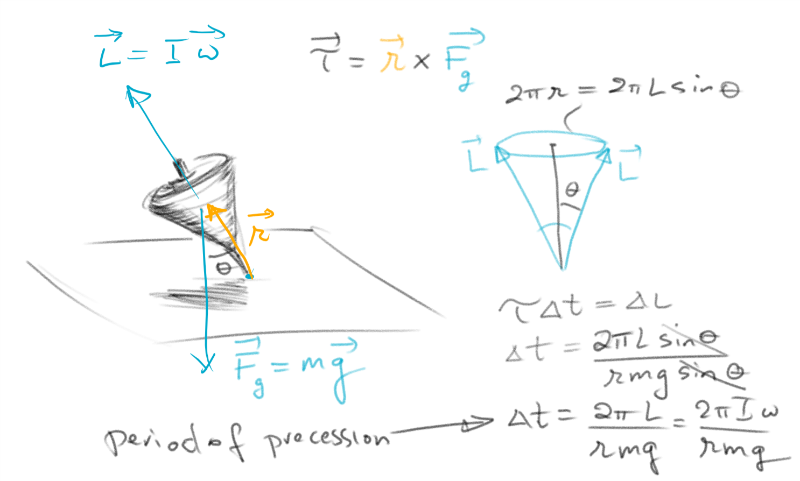Precession
Precession is the name given to the gradual, periodic changing of the orientation of the axis of rotation of an object. The most common example is probably a toy top, or gyroscope to the physicist. A picture with the period of precession of the gyroscope is shown below.
The period of the gyroscope is the time it takes the axis of rotation to slowly rotate and come back to where it started. A diagram of the angular momentum vector a half period apart is shown on the right in blue. The magnitude of the change of the angular momentum is the "length" of the circle at the top of the cone of angular momentum. Its length is shown.
Since torque over time changes angular momentum (and we assume the torque is constant), the relationship can be written as a product. The time to go once around is the period of precession.

The result above for suggests that the period of precession is longer for a faster-spinning top. This is likely your experience. It other words, a fast-spinning top (large ) is a stable one. The other parameters relate to the shape of the top, and since stability is key to the design, the goal in terms of design would be to have a large rotational inertia with a relatively small gravitational torque. Both of these things would contribute to a larger period of precession (and more stability).